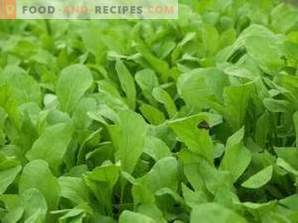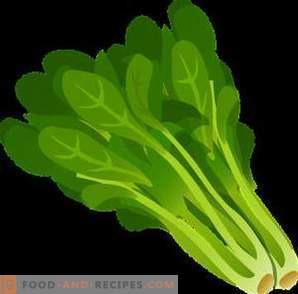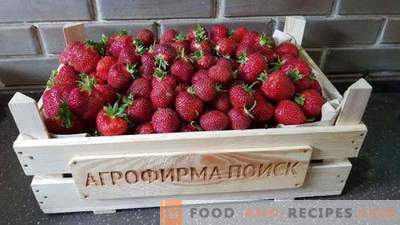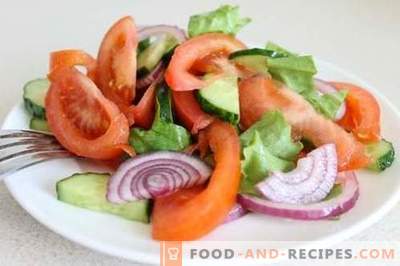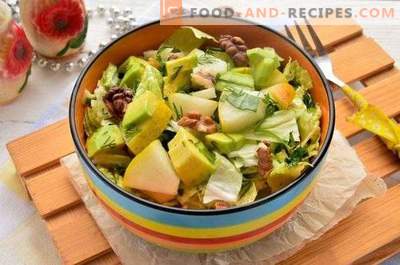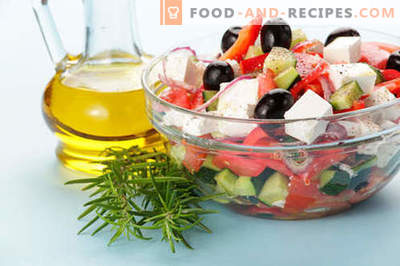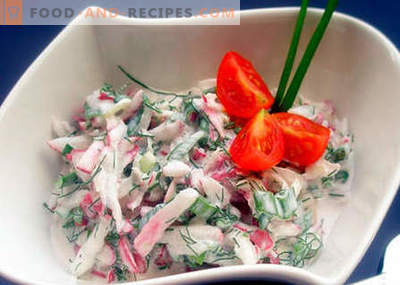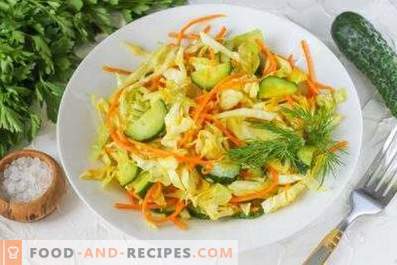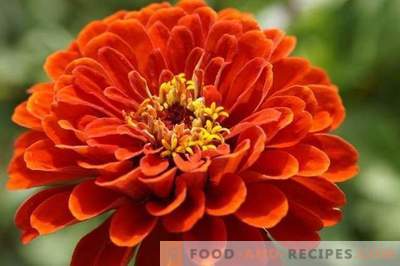Salad is in great demand among buyers of vegetable markets and supermarkets. But to buy a really high-quality product, unfortunately, is quite difficult - many useful substances of salads are lost during storage and transportation. For example, vitamin C is very sensitive to light and quickly destroyed. Fortunately, growing a salad is quite simple. In this case, not even necessarily on the beds! On the sunny windowsill you can get a decent crop of lettuce almost all year round. The main thing is to choose the right varieties and quality seeds.
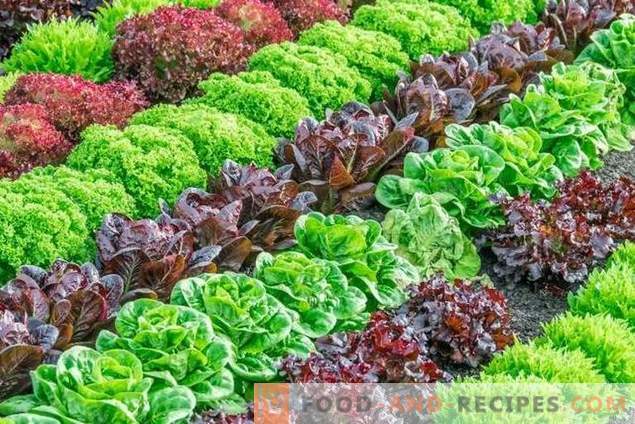
Tip: Do not cut the salad with a metal knife, but rather tear it or use a ceramic knife, since in contact with metal, vitamin C is exposed to oxidative effects.
The advantages of eating salad
The lettuce grows to its presentation only 40-45 days, and the lettuce about 70 days. Consequently, depending on the region, in an open, protected ground or in a greenhouse, it can be obtained in season 3-4 of the harvest.
You can sow a salad every two weeks and get the most useful vegetable that contains easily digestible vitamins and trace elements: A, C, K B9 (folic acid), iodine and others. Salads also contain a large amount of beta-carotene (provitamin A), which is a powerful antioxidant. This substance acts as a reliable protection of cells from free radicals.
Good nutrition is the prevention of various diseases that can be triggered by a lack of nutrients. That is why fresh salad leaves are recommended for daily consumption.
Important! If it is not possible to provide a complete diet from fresh and organic products, before taking vitamins or dietary supplements, be sure to take a comprehensive blood test for vitamins, which can be done in many laboratories. And consult a doctor to find out from a shortage of which substances the body may suffer.
All the varieties of lettuce listed below contain enough folic acid. It participates in blood formation, promoting the formation of new cells. Eating such cultures is good for people of all ages.
Features of growing lettuce
Salad is an unpretentious, cold-resistant plant that withstands short-term lowering of temperature and even frosts to –5 ° C. In the strong heat of landing, it is advisable to apply a protective net.
The optimum soil temperature for seed germination is +20 ... + 22 ° C. Seeds are sown in open ground at the beginning of April in wide rows with 60-70 cm row spacing according to the 20x30 cm scheme. Sowing depth is 1-1,5 cm. Rolling is carried out before and after sowing.
Before the appearance of full germination, thinning is carried out, leaving 15-20 cm between plants. After thinning, fertilizing is carried out with mineral fertilizers. Salads respond well to top dressing. As with any culture, do not feed earlier than 2 weeks after germination.
Harvesting nuances: in order to keep the salad longer, lose less useful properties, do not water it the day before harvest, but pick it in the morning.
So, which salads have all the advantages and are suitable for year-round cultivation?
Lollo Rossa Salad
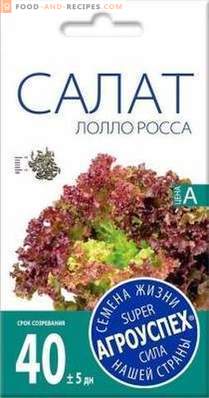
Lollo Rossa is sometimes called coral. It is a type of lettuce. Early ripe crop with a high iodine content.
The yield of per square meter is 2.5 kg to 5-5 kg. The mass of one plant is 300-350 grams. The outlet diameter is up to 20 cm. The plant is upright.
Taste: juicy and tender leaves with a pleasant mild flavor will suit meat dishes and vegetable salads.
Nutrients: salad contains such healthy ingredients as vitamins A, K, B9 and ascorbic acid. Also, it has a high content of potassium, magnesium, calcium, iron, selenium, phosphorus, sodium, zinc, manganese and copper.
Lollo Biondo Salad (“curly” variety of Lettuce)
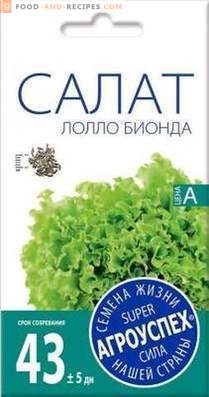
Taste Lollo Biondo - leaves have a rich nutty flavor without a bitter aftertaste. The texture of the salad is crispy.
Content of useful substances: phosphorus, zinc, magnesium and calcium, cobalt, iodine and many vitamins and minerals. Lollo Biondo - semi-capped variety with a medium-sized leaf, strongly wavy on the edge, green.
Productivity 3, 0 kg / sq. The rosette of leaves is semi-erect, 24 cm high, 25 cm in diameter, the mass of the plant is 150 g.
Salad “Miracle of the Four Seasons”
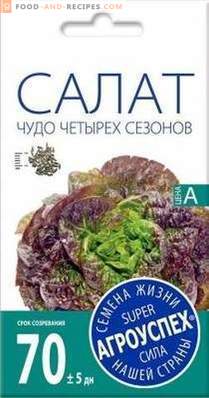
A cabbage variety with a maturity of 70 days. Head size average. The outer leaves are bronze-red in color, while the inner leaves are yellow-green. Taste: The Miracle of the Four Seasons has a very delicate, oily, sweet taste. Contains iodine, as well as a whole vitamin-mineral complex.
Yield 3, 9 kg per square meter meter.
Rubin Salad
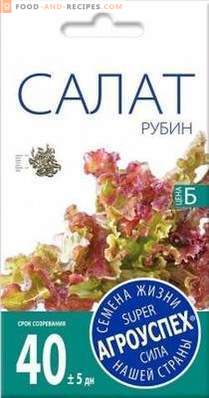
Early ripe ruby lettuce is resistant to stalking and high temperatures.
Variety with curly dark red leaves with a green color in the center and high decorative qualities. The rosette of leaves is semi-upright, 20 cm high, with a diameter of 35 cm.
Productivity 1, 9 kg / sq. m. Plant weight 200 g
Taste: it has a delicate flavor, the texture is crispy.
Lifly Salad
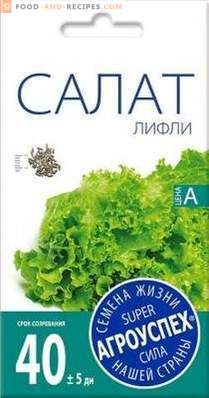
The early-seasoned Lifel leaf lettuce is suitable for growing throughout the season in open and protected ground, as are all the varieties we have described above. The leaf is large, dark green, rounded, highly bubble, wavy on the edge.
Taste: crispy, excellent. Long time no arrow. Plant mass up to 250-300 g. Variety is resistant to regional burns and necrosis.
Productivity 2, 8 kg per square meter
Combine different varieties of salads in your beds and get the maximum benefit for yourself and your family. We hope that the tips of our article and the seeds of Agro Success will help you with this.
